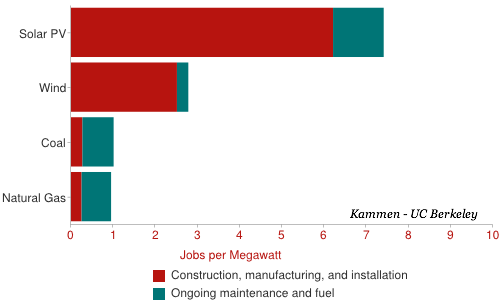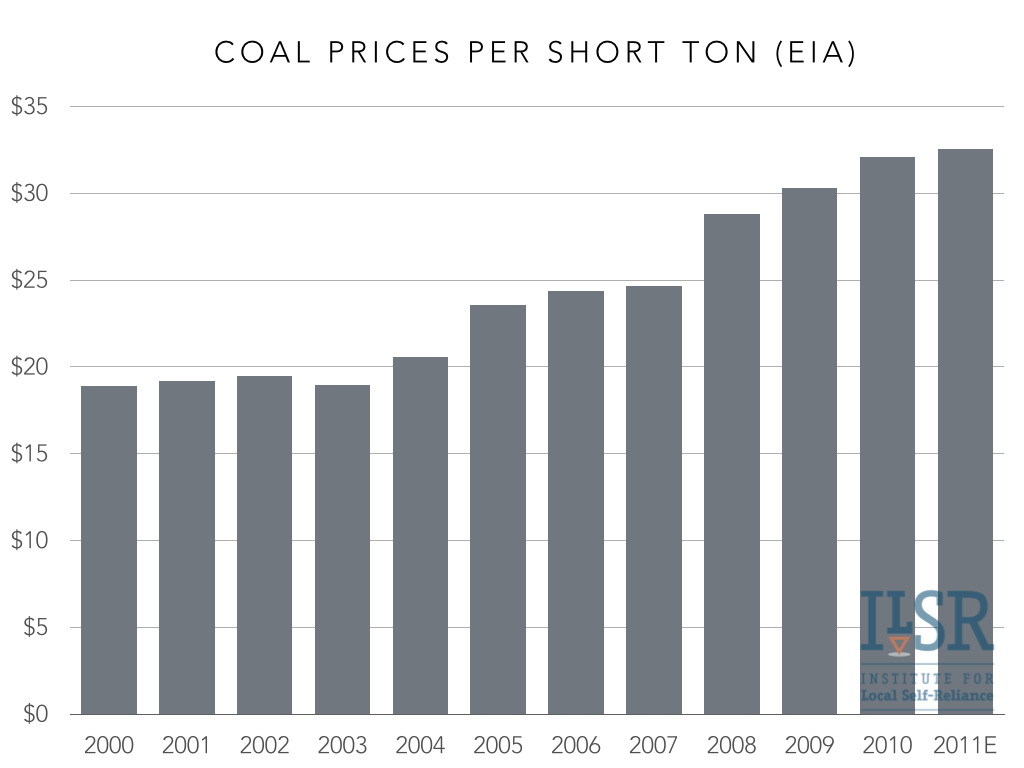You are here
Why Aren’t Rural Electric Cooperatives Champions of Local Clean Power?
By John Farrell - Institute for Local Self-Reliance, August 18, 2014
Disclaimer: The views expressed here are not the official position of the IWW (or even the IWW’s EUC) and do not necessarily represent the views of anyone but the author’s.
When it comes to ownership, there are few better structures for keeping a community’s wealth local than a cooperative. So why is it that America’s rural electric cooperatives are tethered to dirty, old coal-fired power plants instead of local-wealth generating renewable power?
There are a lot of answers to this question, but it might start with this: electric cooperatives aren’t quite like other cooperatives.
The Seven Slipping Cooperative Principles
Cooperatives around the world adhere to the “Seven Cooperative Principles,” but electric cooperatives (at least in the United States) fail on several of these principles.
- Voluntary and open membership. Nope. If you want electric service in cooperative territory, you sign with the cooperative. While it’s no different than rules for other types of utilities in the 30 states that grant utilities a monopoly service territory, it violates the principles of cooperatives.
- Democratic control (one member, one vote). Not always. Some electric cooperatives award one vote per meter, and some customers (e.g. farmers, industry) have more than one meter. Furthermore, many cooperatives filter potential board candidates with “nominating committees.” And look, here’s a board election with no opposition!There’s also a big gap between cooperative member support for (paying more for) renewable energy and cooperative behavior. This 2013 survey in Minnesota, for example, shows little separation between urban and rural areas (where cooperatives are dominant) in support for renewable energy, yet cooperatives opposed every bill favoring clean energy in the 2013 legislative session.
- Members control the capital of the cooperative.
- Cooperatives maintain their autonomy and independence even if they enter into agreements with other entities. Questionable. Many cooperatives sign 40- or even 50-year purchase contracts with power suppliers to supply 95% of their entire sales, mostly from coal-fired power plants. Standard and Poor’s explains this in an evaluation of a Seminole Electric in Florida, a generation & transmission cooperative that sells to rural cooperatives. In their words, one of the utility’s credit strengths is, “A captive retail market and the ability to set rates through take-and-pay, all-requirements wholesale power agreements with nine of 10 members through 2045.”
- Cooperatives provide educational opportunities to their members and the public on the benefits of cooperatives. Questionable. If you read rural electric cooperative newsletters, you’ll hear a lot about climate change but you’ll often find the phrase in quotes
- Cooperatives work best when cooperating with other cooperatives. Questionable, refer to #4. Some of these power suppliers are “co-ops of co-ops,” but these long-term contracts have tethered the economic fortunes of cooperative members to the vagaries of the coal market (see below). More than any other type of utility (public or investor-owned), rural electric cooperatives are reliant on coal for their electricity fuel. The average U.S. utility is 38% coal-fired power.
- Cooperatives work for sustainable development of their community. Not enough. Most cooperatives rely heavily on imported power purchased on long-term contracts with the goal of cheap power, but that ironically leave them at the mercy of unfettered price increases. They also have missed an enormous economic development opportunity from renewable energy. For example:Renewable energy provides significant economic impacts ($1 million per megawatt of wind, $250,000 per megawatt for solar) with multipliers for local (i.e. cooperative) ownership (up to 3.5 times more local economic impact, and twice as many jobs). Wind and solar provide more jobs per megawatt of power capacity, as well.
 Finally, rural electric cooperatives have organized a 1 million comment campaign against EPA regulations of carbon pollution from power plants. Hardly a commitment to “sustainable development.”
Finally, rural electric cooperatives have organized a 1 million comment campaign against EPA regulations of carbon pollution from power plants. Hardly a commitment to “sustainable development.”
How Can Cooperatives Change?
Restoring their 7 principles could do a lot. Improving their structure so that the cooperative directors reflect member opinion on renewable energy would restore the principle of democratic control. Avoiding ridiculously long power purchase contracts would provide local cooperatives with real autonomy and control of their energy costs and options. Broadening their focus on economic development beyond cheap power to include renewable energy would make “sustainable development” much more realistic.
Can it happen? It already has, in Iowa and on Kaua’i, and there are more tools that ever at their disposal. But as with electrification, no one will do it unless they do it themselves.
The Fine Print I:
Disclaimer: The views expressed on this site are not the official position of the IWW (or even the IWW’s EUC) unless otherwise indicated and do not necessarily represent the views of anyone but the author’s, nor should it be assumed that any of these authors automatically support the IWW or endorse any of its positions.
Further: the inclusion of a link on our site (other than the link to the main IWW site) does not imply endorsement by or an alliance with the IWW. These sites have been chosen by our members due to their perceived relevance to the IWW EUC and are included here for informational purposes only. If you have any suggestions or comments on any of the links included (or not included) above, please contact us.
The Fine Print II:
Fair Use Notice: The material on this site is provided for educational and informational purposes. It may contain copyrighted material the use of which has not always been specifically authorized by the copyright owner. It is being made available in an effort to advance the understanding of scientific, environmental, economic, social justice and human rights issues etc.
It is believed that this constitutes a 'fair use' of any such copyrighted material as provided for in section 107 of the US Copyright Law. In accordance with Title 17 U.S.C. Section 107, the material on this site is distributed without profit to those who have an interest in using the included information for research and educational purposes. If you wish to use copyrighted material from this site for purposes of your own that go beyond 'fair use', you must obtain permission from the copyright owner. The information on this site does not constitute legal or technical advice.






